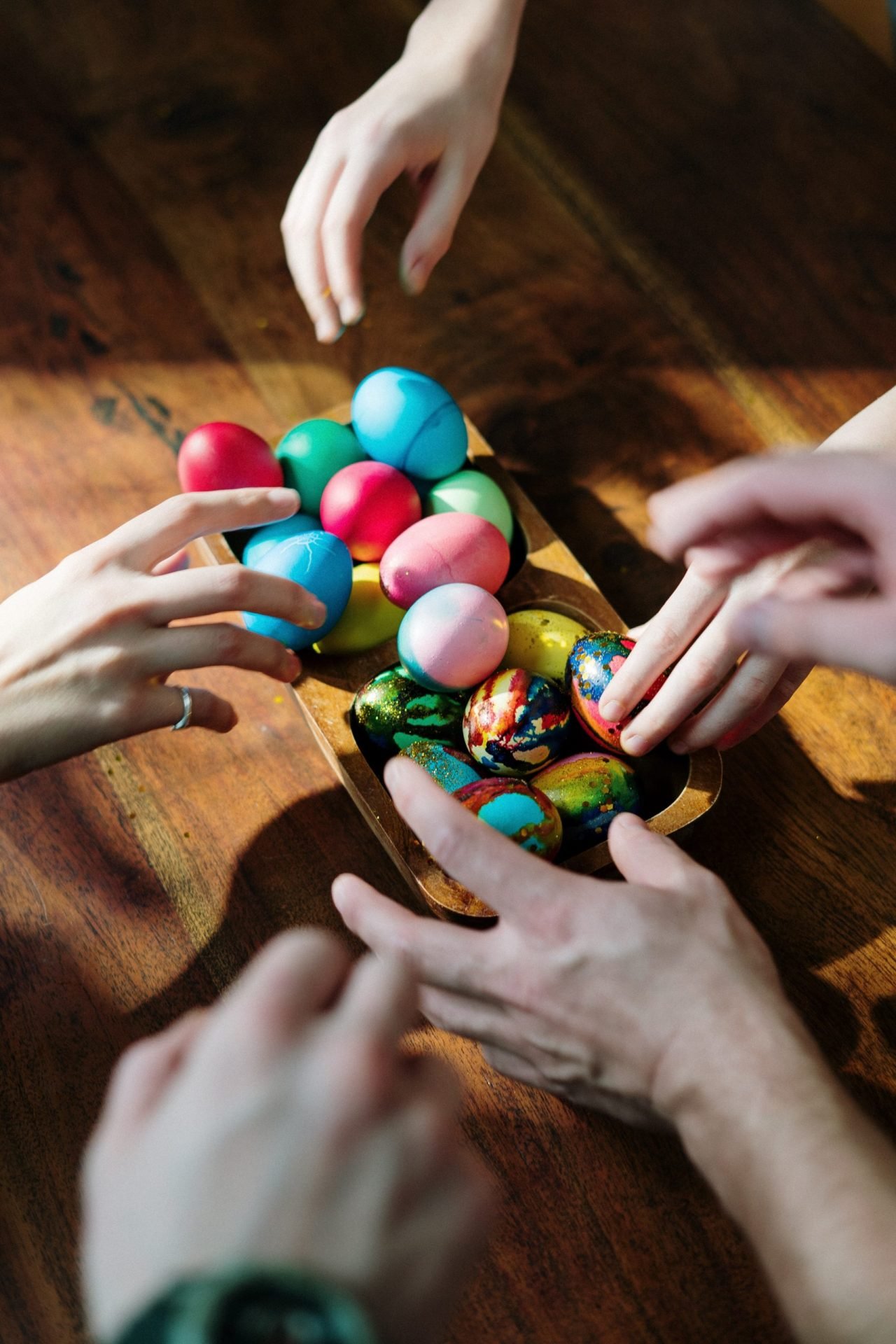Eggs have been part of human culture since ancient times and can be found in various cuisines across the world. In India, eggs are often boiled and seasoned with salt, pepper and spices such as turmeric and coriander. In Europe, omelets or scrambled eggs are popular choices for breakfast.
Chinese cuisine includes a variety of egg dishes such as century eggs or preserved eggs, while in Japan raw eggs are used in traditional dishes such as Tamagoyaki.
Middle Eastern countries like Turkey also feature egg-based dishes such as Menemen, which is a Turkish-style omelet. From deviled eggs to frittatas, quiches and fried rice dishes, eggs are an integral part of many cultural foods all around the globe!
Let’s explore the significance of eggs in various cultures and traditions.
Which came first? Chicken or Egg?
This age-old question of whether the chicken or the egg came first has perplexed scientists for centuries. While the jury is still out on this matter, many theories have been proposed that attempt to answer the question.
One popular theory is that the first bird was a primitive species of chicken and its egg was in existence long before any other species of birds were present. This theory is supported by fossils that show early forms of chickens existing over 60 million years ago.
Despite these scientific discoveries, we may never know with certainty which came first, the chicken or the egg.

How Do Different Cultures Eat Eggs?
Eggs are an incredibly versatile food that can be enjoyed in a wide variety of ways. Around the world, people have come up with unique and delicious recipes to enjoy eggs.
Depending on the culture, they may be boiled, scrambled, fried, poached, pickled, and even eaten raw. Here are just some of the different ways that eggs are enjoyed across cultures.
Boiled
Boiled eggs are probably the most common way that people enjoy eggs around the world. Hard-boiled or soft-boiled eggs can be used as part of a meal or simply as a snack. In France, oeufs à la coque are very popular – this involves cooking eggs in their shells in boiling water until the whites and yolks reach desired firmness.
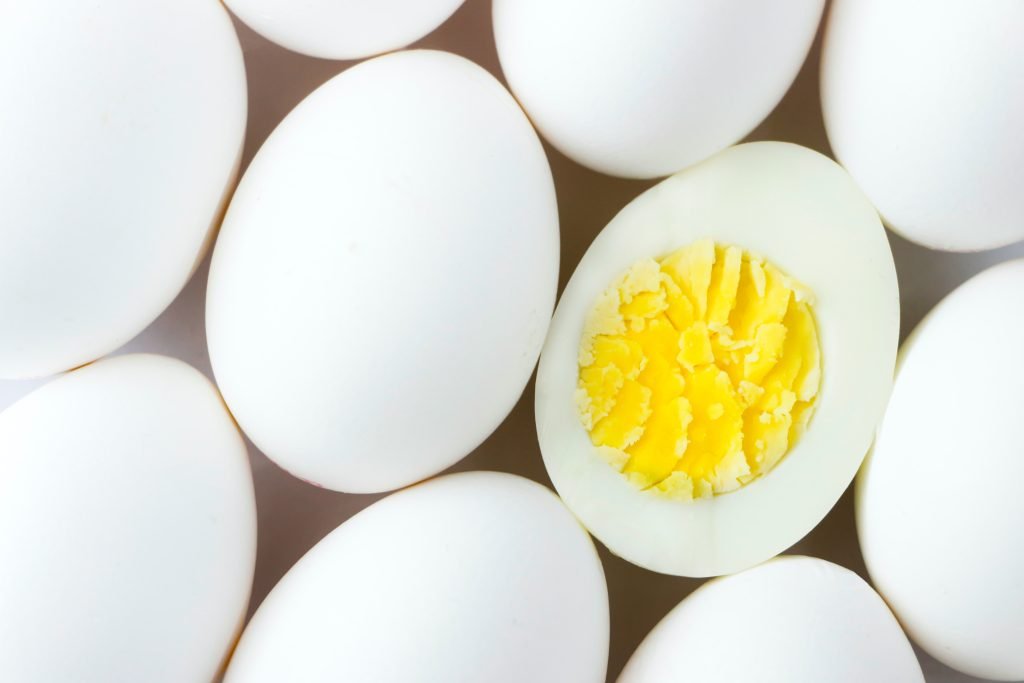
Fried
Fried eggs are especially popular in Asian cultures. Chinese and Korean people often fry eggs as part of stir-fry dishes, as well as serving them as a side dish for breakfast.
Another popular recipe from Asia is egg rolls – thin slices of fried egg wrapped around vegetables such as mushrooms or bamboo shoots and served with soy sauce for dipping.

Scrambled
Scrambled eggs are another way to enjoy eggs that is favored by many cultures. They can be prepared plain or mixed with other ingredients such as cheese, herbs, or vegetables. Scrambled eggs are a traditional part of Spanish cuisine and Mexican cuisine where they’re usually spiced up with chili peppers or salsa for extra flavor.
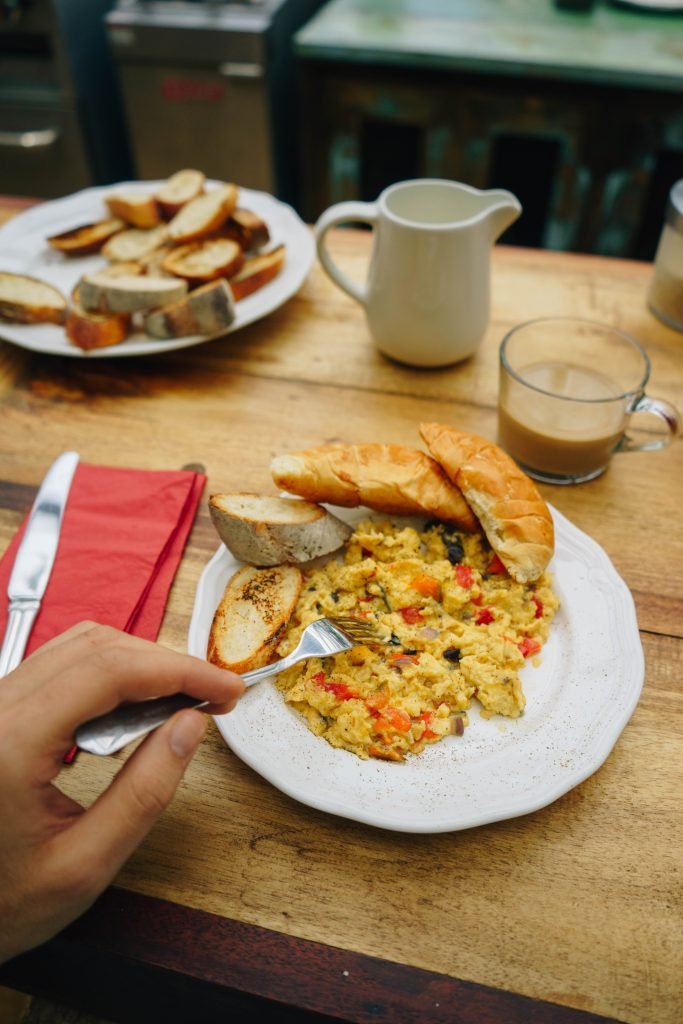
No matter what culture you’re from, it’s clear that there are countless delicious ways to enjoy eggs! From boiling to frying to scrambling – no matter how you prefer your eggs, you’re sure to find a way to make them fit your own culture’s flavors and tastes!
What culture does not use eggs?
It may come as a surprise to many that there is an entire culture out there which does not use eggs in their food. The Parsees are a religious minority in India and they have maintained this egg-free diet for centuries.
Eggs are traditionally seen as symbols of fertility and because the Parsees don’t believe in animal sacrifice, they have chosen to abstain from them. This culture has successfully found delicious substitutes for eggs which help make up some of their most cherished dishes.
For example, they replace eggs with cream cheese and onions when making omelettes. In addition, when making cakes, cookies or muffins, they often substitute beaten yogurt and water for the eggs.
This simple change can result in just as delicious desserts. By avoiding the use of eggs, the Parsees remain true to their beliefs while still enjoying wonderful meals.
Examples of dishes that uses eggs in the different cultures
Eggs are an incredibly versatile ingredient used in cooking all around the world. They are found in a wide range of dishes from breakfast to dinner, with each culture putting their own unique spin on them. In this article, we’ll explore some examples of popular egg dishes from different cultures.
European Cuisine:
Eggs are staples in many European cuisines, including French, Italian, Spanish, and German cuisine. Popular egg dishes include omelettes, frittatas, strata, quiches and custards. Each dish can be tailored to suit individual tastes and can even be served as a light snack or entrée.
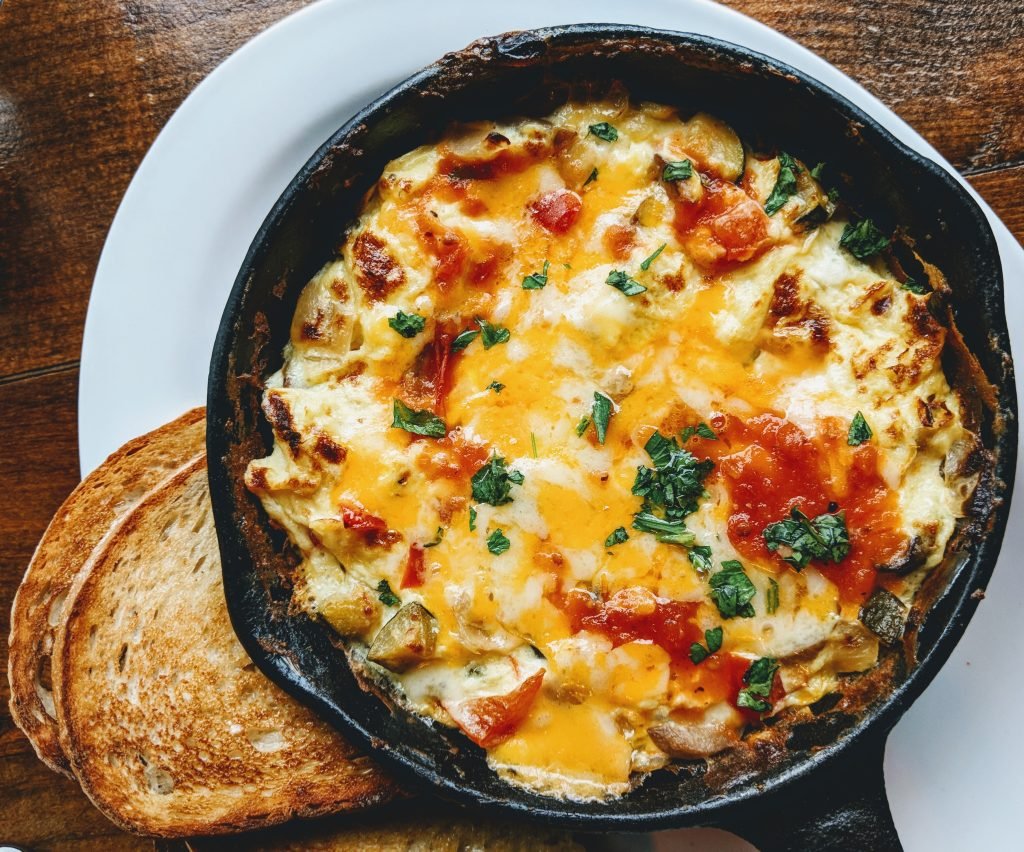
Asian Cuisine:
Asian cuisines feature eggs prominently in many traditional recipes. Egg foo young is a classic Chinese dish made with vegetables and beaten eggs.
Other popular Asian dishes include Japanese tamagoyaki (omelette) and Korean gyeran mari (rolled omelette). All these dishes are usually accompanied by steamed rice or noodles.

Middle Eastern Cuisine:
In Middle Eastern cuisine, eggs often make appearances as breakfast dishes such as shakshouka (eggs poached in a tomato sauce) or kuku sabzi (a frittata-style egg dish). There are also several regional specialties such as Kurdish bastirma omelette that mix together herbs and spices with egg for a savoury taste sensation.
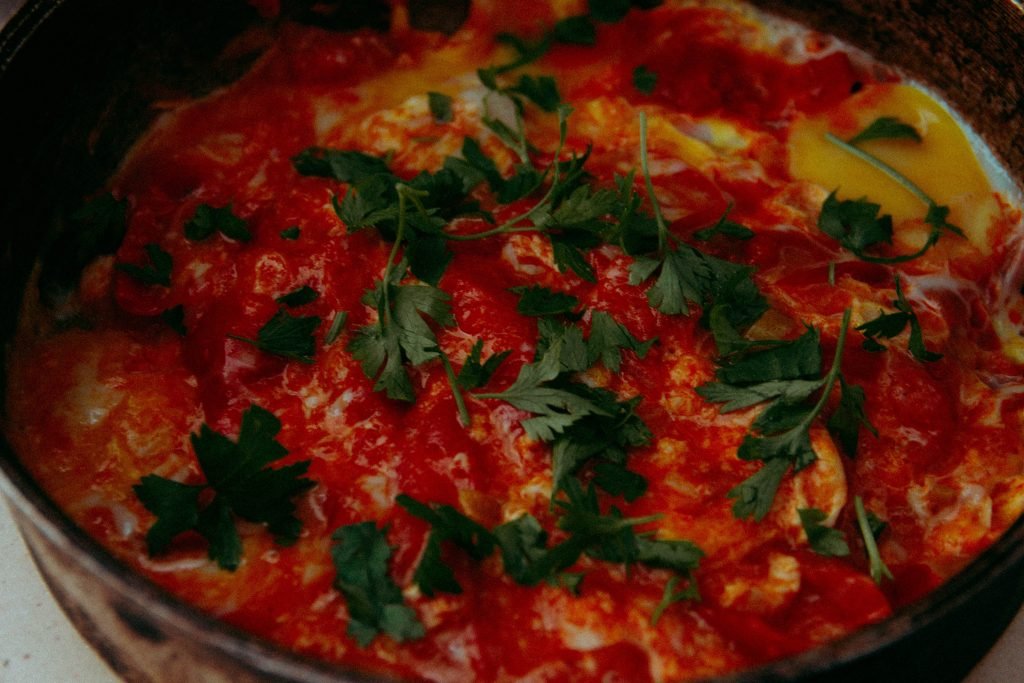
Indian Cuisine:
In India, eggs can be enjoyed in both sweet and savoury recipes. Egg curry is one of the most common egg dishes featuring boiled eggs cooked with tomatoes, onion, garlic and aromatic spices. Egg halwa is another Indian favourite made with sugar syrup and cardamom for sweetness that’s perfect for dessert or a snack.
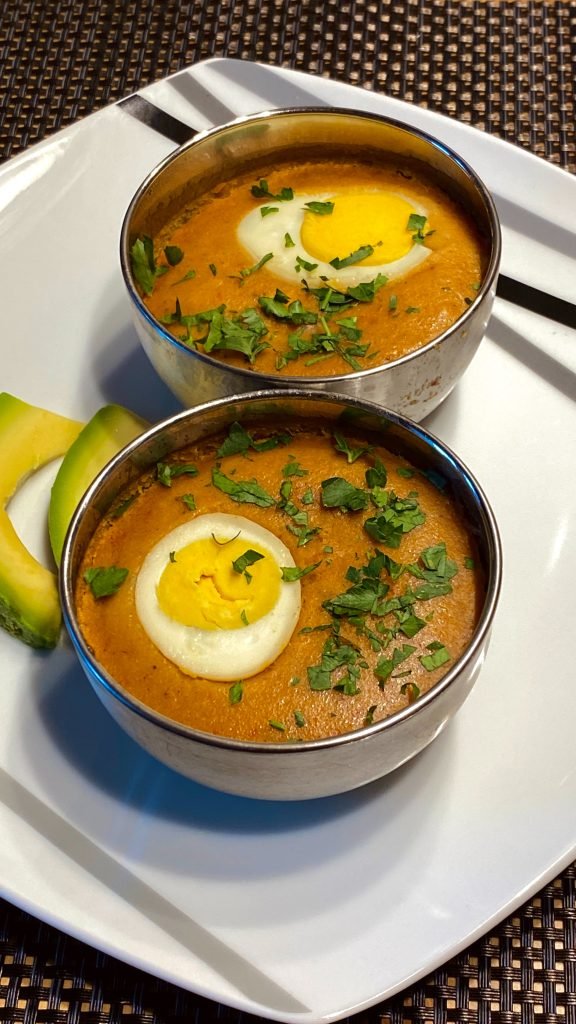
These are just some of the delicious egg recipes from around the world. Whether you’re looking for a hearty breakfast to start your day off right or something sweet for after dinner, there’s sure to be an egg dish that suits your tastes!
What culture starts eating eggs?
Egg consumption is thought to have originated with the ancient Chinese, who used eggs as a source of nutrition for over 5,000 years.
Evidence of this can be found in some of the oldest Chinese paintings which show eggs being used in food offerings and preparation. The popularity of eggs spread from China to other parts of Asia and Europe and they are now a part of many different cuisines all around the world.
Eggs have become an integral part of our daily diets due to their nutritional value and convenience, but it all began with the Chinese.
What culture uses eggs the most?
Chinese culture has a strong history of using eggs in their cuisine, especially for special occasions and celebrations.
It is not uncommon to find egg-based dishes like moon cakes, scrambled eggs, egg rolls, and fried rice on the tables during festivals and family gatherings.
In fact, some even believe that the symbolic shape of an egg stands for harmony and togetherness. Beyond food, eggs also have spiritual significance in Chinese culture – representing the hope of having a prosperous new year or wishing for an upcoming pregnancy.
What is Faberge Egg?
The Faberge Egg is an iconic and valuable symbol of the imperial past of Russia. It is a series of exquisitely crafted, jewel-encrusted eggs made between 1885 and 1917 under the patronage of the last two Russian Tsars.
Each egg contains a special surprise which has made them incredibly collectible items with some of them being sold at auction for millions of dollars. The eggs are adorned with precious gemstones, intricate filigree and elaborate goldsmithing that represent a long and rich Russian history.
These objects have been immortalized in artworks, literature, films and fashion collections over time. The mysterious story behind these elegant pieces continues to captivate audiences all around the world.

What cultures decorate eggs?
Eggs have been a part of culture for centuries, and different cultures around the world decorate them in unique ways.
Ukrainian and Polish cultures have popularized pysanky eggs, which are decorated with wax and vibrant dyes to create intricate patterns.
Other Eastern European cultures such as Serbia and Hungary also dye their eggs to represent life and fertility during the Easter holiday. Middle Eastern countries use onion skins to achieve a marbled effect on their hard-boiled eggs, while Turkish and Greek traditions feature “egg fights” using dyed red eggs to celebrate Easter.
In the U.S., the custom of egg dyeing is widespread among families during the springtime season. Whether dyed or painted, these symbolic eggs carry deep cultural significance.

Why are eggs a symbol of new life?
Eggs are an incredibly popular symbol of new life and rebirth, primarily due to their similarity to a cocoon or other womb-like structure.
An egg has a shell protecting what’s inside, similar to the way an infant is protected in the womb, which could be seen as an important representation of new beginnings. In addition, eggs also provide nutrition and protection during growth; it’s this link that allows eggs to become symbols of nurturing and care that accompany all aspects of life, not just in terms of physical growth but also in spiritual or emotional development.
Lastly, when cracked open, eggs have something brand new inside — like new life itself. This adds another layer of symbolism as well as visual representation for this idea. All these factors make eggs a meaningful symbol of new life throughout history and many cultures.
Why do Ukrainians decorate eggs?
Ukrainians have been decorating eggs for centuries as a symbol of new life and fertility. The practice is also believed to bring good luck, protection from evil, and spiritual well-being.
Egg decorating has also been used in Ukrainian rituals such as the preparation for Easter and has become an important part of their cultural identity. In many parts of Ukraine, eggs are still decorated by hand with traditional designs and bright colors like blue, red, yellow and green that are associated with Spring.
Each region often has its own traditional symbols or decorations such as roosters or religious images which represent their values and beliefs. Through egg decorating Ukrainians connect with their ancestors, history and culture in a colorful way.
Where did the tradition of giving eggs begin?
The tradition of giving eggs as a gift likely began centuries ago, but its exact origins remain somewhat unclear.
Some say the custom dates back to ancient Greece and Rome, where decorated eggs were given out at festivals to honor various gods and goddesses.
Other theories suggest the practice originated in pre-Christian Europe, when it was used as a symbol of springtime fertility and rebirth. While the origin of the egg-giving tradition may never be known for certain, it has become an important part of many cultures’ holiday celebrations over the years.
The Enormous Egg
The Enormous Egg is a 1956 children’s novel by Oliver Butterworth, which tells the story of Nate Twinkle who finds an enormous egg and discovers it belongs to a giant prehistoric bird.
With the help of his father, Nate works hard to raise the young bird that hatches from the egg and becomes known as Ace. As Ace grows, Nate’s father attempts to keep their secret hidden from everyone around them.
Together, Nate and his father are able to keep Ace safe from people looking to capture him for fame and fortune. Through many adventures and struggles, in the end, Nate succeeds in releasing Ace into his natural environment so he can continue to grow in peace and freedom.
The Instagram Egg
The Instagram Egg is a photo of an egg posted on the social media platform Instagram, with the intention of setting the world record for the most liked photo ever on Instagram.
The account was created on January 4th 2019, and it only featured one image – a stock photo of a brown egg, accompanied by no text or description. It immediately went viral as users rushed to like the post and make it reach the number one spot.
As of May 2019, the post has been liked more than fifty-three million times, setting the world record for the most liked post ever.
The Easter Egg
Easter eggs are a fun tradition associated with the celebration of Easter in many cultures around the world. These special eggs typically involve decorated eggs or plastic eggs filled with candy, money, and small toys.
It is believed that the Easter egg tradition began with the ancient pagan traditions which involved celebrating the arrival of spring and fertility through dyed and decorated eggs. In Christianity, these colorful eggs also serve as reminders of Jesus’ resurrection from death.
There is much debate about the origins of Easter egg hunts, but it is believed that they have been around since at least medieval times. Whatever their origins, they remain an important part of many people’s celebrations of Easter today.

The Egg Dance
Egg dance is a folk custom found in many cultures around the world. It involves dancing on eggs as a means of good luck, blessing or fertility. In some cultures, egg dance can also represent a sign of welcome to visitors or even just as an entertainment activity.
The dancers move from side to side, putting their feet gently down on the eggs. This allows the dancers to pick up and drop the eggs without breaking them. Depending on the region, different music may be played while people egg dance, and costumes can be used to give more festive vibes to the activity.
Egg Decoration in Slavic Culture
Egg decoration in Slavic culture is a centuries-old tradition that has been passed down through generations.
This ancient craft involves intricately painting the eggs using symbols and patterns to bring luck and good fortune to the household. It’s an essential part of many springtime festivals celebrated by different cultures across Eastern Europe.
Depending on which Slavic culture you’re looking at, the designs may be quite different, as every group puts their own unique spin on the artwork. Traditionally, red dye is used most commonly in decorating Easter eggs, representing rebirth and renewal. Beyond being visually beautiful, these ornamental creations can also have deeper spiritual meanings for those taking part in this long-standing cultural custom.
Egg Drop Competition
The Egg Drop Competition is a fun and popular event that often takes place at science and engineering fairs. It requires teams to construct a contraption from everyday materials that can protect an egg from the impact of a fall from a great height.
Once all teams have finished constructing their device, the eggs are dropped one at a time and teams are judged on which eggs survived the fall. It is an excellent way to get people thinking about physics, creativity, problem-solving and teamwork in a hands-on and exciting way.
The Golden Egg
The Golden Egg is a metaphor used to describe an elusive goal or a great success that takes tremendous effort to achieve. It has been associated with hard work, patience, and ambition, but also luck.
The Golden Egg is a source of pride for those who can accomplish it because of the time, effort, and risk involved in its attainment.
As a symbol, it represents more than just achieving material success; it’s also about personal satisfaction and happiness from having accomplished something remarkable.
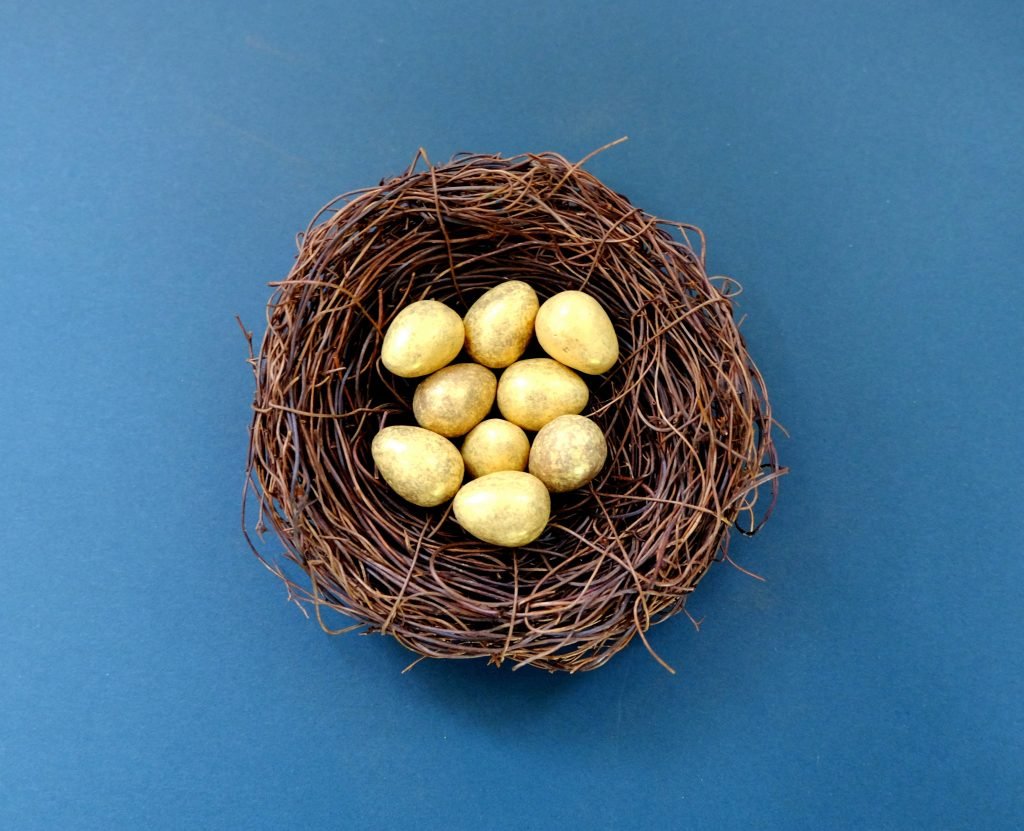
Asian Egg Customs
Asian egg customs vary greatly between different cultures and countries. In China, it is customary to serve eggs boiled in their shells as part of traditional Lunar New Year festivities.
Similarly, eggs are often served with sushi and other meals in Japan, while they are usually served steamed in Korea. Additionally, certain special dishes such as century eggs and duck eggs are popular in many parts of Asia.
Lastly, eggs can be eaten for breakfast in many cultures throughout the continent, including poached or scrambled eggs, or fried and placed inside sandwiches or on toast. Ultimately, Asian egg customs demonstrate the great variety of ways that eggs are enjoyed across the continent!
Egg Culture in Japan
The egg culture in Japan is one of the oldest and most prevalent aspects of Japanese food culture. From omelettes to raw eggs on rice, eggs are used in a variety of ways in Japanese cuisine.
While boiled eggs were eaten during the Jomon period (10,000–300 BCE), they became especially popular in the Edo period (1603–1868).
Today, eggs are used for everyday meals as well as festive occasions such as Hinamatsuri (Girls’ Day) or wedding receptions. Tamago-yaki is a common egg dish that can be served either savory or sweet. Soft boiled eggs called “onsen tamago” are a favorite breakfast item. Eggs also figure prominently in sushi and other dishes such as zoni soup with mochi (rice cake) eaten during New Year’s festivities. Overall, eggs are an essential part of Japan’s culinary heritage.
Are eggs different in Japan?
Eggs in Japan are indeed different from those found in other countries. The most prominent difference is their size and shape; eggs in Japan tend to be slightly longer and more oval-shaped than the more common rounded eggs found elsewhere.
Another significant difference is that the shells of Japanese eggs are harder, making them easier to peel without any parts sticking to the egg.
Finally, some say that the flavor and nutrition content of Japanese eggs are superior due to different poultry diets. In conclusion, while they may look a little strange compared to other countries’ eggs, it’s undeniable that Japanese eggs have a unique charm.
Are eggs considered vegetarian or non vegetarian in different cultures?
Eggs are considered a controversial food when it comes to vegetarianism. Different cultures have different opinions on whether eggs should be classified as vegetarian or non-vegetarian.
In India, where the Hindu religion is prominent, many followers avoid eating eggs due to religious restrictions; however, other cultures, such as China and Southeast Asia, classify eggs as vegetarian-friendly food.
In Western culture, many vegetarians abstain from consuming eggs for ethical reasons because chickens are seen as animals that need protection and care. Therefore, depending on cultural views, some people consider eggs to be part of a vegetarian diet while others may choose to abstain from eating them altogether.
What is the favorite way to eat eggs around the world?
Eggs are one of the most versatile foods in the world and can be prepared in a variety of ways. Depending on where you live, different methods may be preferred when eating eggs.
In the Middle East, they like to scramble them and add spices, while in parts of India, they’re cooked with vegetables or meat.
In China, boiled eggs are often eaten as part of a traditional breakfast and omelets are a favorite in many countries across Europe. French cuisine typically serves poached eggs on toast while North Americans often go for fried or scrambled eggs served with bacon. One thing is certain – everyone loves eating eggs!
How do the Irish eat the eggs?
The Irish often enjoy eggs as a traditional meal. It is common to see eggs boiled, scrambled, poached or fried in butter.
Additionally, omelettes and quiches are popular options as well. Many people choose to enjoy their eggs with toast and tea for breakfast, while some also eat it for lunch or dinner with a side of mashed potatoes and bacon.
Eggs are even added to casseroles or fried into potato cakes. The Irish often have a great variety of recipes that include the egg as a primary ingredient and they take great joy in eating this traditional dish.
Does Indian culture eat eggs?
Eggs have been consumed as a part of Indian cuisine for centuries, with the arrival of Hinduism in India around 1000 BCE. Ancient scriptures show that eggs were considered sacred, and were used as offerings in religious ceremonies.
In more modern times, eggs are commonly eaten as a part of breakfast, or included in other dishes such as curries and pakoras. Additionally, boiled eggs are seen as a snack in some regions of India. Therefore, yes, Indian culture does eat eggs.
Do Asian eat boiled eggs?
The answer to this question is both yes and no. In some parts of Asia, boiled eggs are popular breakfast foods and snacks.
For example, in Japan, tamago kake gohan is a dish consisting of hot rice mixed with a raw egg that is cooked together. Boiled eggs are also common components of traditional dishes from Chinese and Indian cuisines, such as wonton soup, poached chicken with ginger and scallions, or curry.
On the other hand, many Asian cultures don’t typically eat boiled eggs. Korean cuisine features omelets, steamed eggs, scrambled eggs, and soft-boiled eggs instead of boiled eggs.
Even within China there is a variety of regional culinary preferences; some areas may not commonly feature boiled eggs on their menus at all.
Top 10 popular eggs dishes from around the world
Eggs are a versatile and beloved food around the world, enjoyed in all sorts of creative dishes. Here is a list of the top 10 popular egg dishes from different parts of the world:
1. Omelet: A French classic that consists of beaten eggs fried in butter or oil with optional fillings like cheese, herbs, and vegetables.
2. Spanish Tortilla: This omelette-style dish hails from Spain and usually includes potatoes and onions along with beaten eggs.
3. Frittata: An Italian baked egg dish made with a combination of meat, vegetables, cheese, and herbs.
4. Scotch Eggs: These British favorites consist of boiled eggs wrapped in sausage meat, breaded and then deep-fried.
5. Egg Drop Soup: A Chinese delicacy that contains whisked eggs cooked in broth seasoned with soy sauce, white pepper, scallions and ginger.
6. Nasi Lemak: A Malaysian specialty made with coconut milk-infused rice served with boiled egg (hard boiled or soft boiled).
7. Poached Eggs on Toast: An Australian breakfast favorite where eggs are poached in water before being served atop buttered toast slices.
8. Kedgeree: An Indian dish made up of curried smoked haddock, boiled eggs, onion and spices typically served as part of an English breakfast meal.
9. Shakshuka: A Middle Eastern favorite consisting of eggs poached in tomato sauce spiced with cumin, chili pepper flakes and paprika alongside feta cheese crumbles if desired.
10. Huevos Rancheros: This Mexican favorite is made up of corn tortillas topped with refried beans and fried eggs garnished with cheese, sour cream and guacamole salsa as desired.
Final Words
In conclusion, eggs are a universal food that is enjoyed in many different cultures. While there may be cultural variations to how eggs are eaten, the overall nutritional benefits remain the same regardless of culture. In many cultures, eggs represent fertility, new beginnings, and hope for a prosperous future.
Eggs can be served for breakfast, lunch or dinner, or as an ingredient in various dishes from around the world. With their many uses and versatility, it’s no wonder that eggs are so beloved around the world.
Recent Posts
What Does Kiviak and Its Eggs Really Taste Like and How Do You Even Eat It?
Kiviak and its eggs taste like fermented blue cheese mixed with oily game meat, wrapped in a punch of ammonia. This dish, found in Greenland, is made by stuffing hundreds of whole auk birds into a...
Are Ethical Concerns in Egg and Chicken Farming Being Ignored?
Egg and chicken farming has raised significant ethical concerns, affecting both the animals involved and the consumers who rely on these products. The conditions in which chickens are raised, their...

